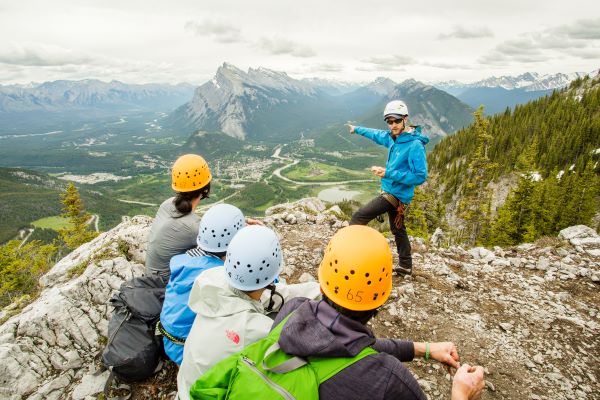With the border closed, international travel to Canada in the first half of 2021 remained extremely low compared to 2019 (see Figure 1). Because the number of both travellers and tourists was so low, measuring any sort of increase since the pandemic struck requires removing any data from earlier than February 2020, the last month before international travel essentially came to a halt.
By doing so, we can see that there has been some increase since April 2020, particularly in July 2021 (see Figure 2). That month saw a notable increase in both travellers and overnight tourists (see Figure 3) entering the country. But compared to pre-pandemic traveller volumes, it was insignificant.
Overall, the total number of international travellers entering Canada in July 2021 was down 95.0% compared to July 2019. This summer, tourism businesses had to rely on business from locals and from people travelling within the country. Recovery did not start for those segments of the industry that rely on international visitation.
Overall economic activity in the sector remained suppressed going into the summer. Across the entire economy, Gross Domestic Product (GDP) had not quite returned to the level seen in January 2020, but it was close. That said, without the pandemic, GDP would have continued to grow—being at 99% of pre-pandemic GDP seventeen months later is not a good news story.
But it is worse for the tourism sector. GDP in tourism-related industries was only 62% of the level seen in January 2020, and for some industries, it was much worse. Air transportation was operating at just 11% of its pre-pandemic level of economic activity. Economic activity in the accommodations industry was only at 58% of where it was seventeen months earlier.
Reflecting lower economic activity, data on monthly business openings and closures for June 2021 show there are fewer active tourism businesses than there were at the start of the pandemic. Active businesses are defined as businesses that reported having one or more employees in a given month. If a business is inactive, they have either temporarily or permanently closed, or are operating with no staff.
As of June, there were 8.6% fewer active tourism businesses than in January 2020. Whereas across all sectors of the economy, there were more active businesses than in January 2020 (see Figure 6).
The travel services industry and tourism transportation industry had lost the most active businesses, down 29.7% and 11.3% since January 2020.
The dataset does not distinguish between a business that has gone inactive temporarily or permanently. However, the fact that the number of tourism businesses has been hovering around 90% of pre-pandemic levels since November of 2020 strongly hints that many of these businesses have closed permanently.
One industry that has an opportunity to recover even with the borders closed is the food and beverage services industry. In June, GDP in that industry was higher than many other segments of the tourism sector. As an industry, it gets about 20% of its total revenue from tourists. Within Canada, international tourism makes up about 20% of tourism demand, while the rest comes from domestic tourists. Thus in terms of a recovery within the tourism sector, the restaurant industry is placed to recover as public health restrictions lift, rather than when the border reopens to travellers.
Restrictions that limit seating capacity or close indoor dining entirely have of course had a serious negative impact on sales within the food service industry over the past year. However, as of July, total food service sales in Canada reached $6.7 billion dollars, which is only 4.0% lower than in July 2019. Regionally, sales varied from -10.4% in Ontario, which only allowed in-door dining part way through July, to +1.5% in British Columbia and +1.7% in Newfoundland and Labrador.
Not all segments of the food service industry have recovered to the same degree, however. In July, sales were up 3.5% in limited-service establishments compared to July 2019. Yet sales were down 4.8% at full-service restaurants, and sales at drinking establishments were still significantly repressed, down 20.4%.
The summer of 2021 was the first opportunity many tourism businesses have had to begin bringing in some revenue to offset the losses and debt incurred over the previous year and a half. For the most part, only those businesses that could cater to locals and domestic tourists had this opportunity. For businesses that cater to events with longer lead times (e.g., conferences and festivals) or to international travellers, this opportunity remains over the horizon.
The point is: just because public health restrictions were loosened does not mean all is now well for the sector.
Many businesses have a huge hole to climb out of financially. Over half of tourism businesses took on debt to sustain themselves, and the majority of those that did are concerned that it will hamper their ability to recover post-pandemic. Two months—less than that in some cases—is too short a time in which to recoup losses built up over fifteen months. This is especially true when businesses were unable to find enough staff, forcing them to turn away some customers, and therefore missing out on potential revenue. And the pandemic itself is not gone. Some regions are once again limiting business activity to mitigate further COVID-19 outbreaks.
The tourism sector started the summer of 2021 from a very difficult position. An inability to find enough workers added to that challenge. Make no mistake—while being able to open was better than not being able to, the industry still has a long way to go before it will be back on its feet.

